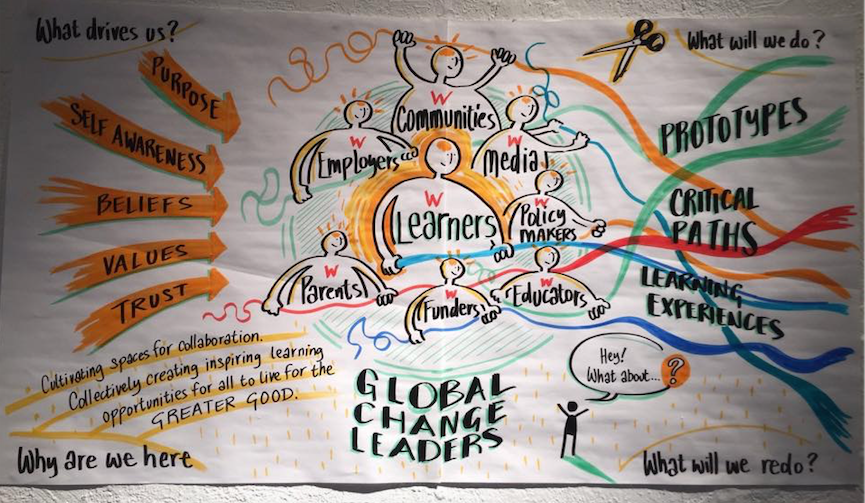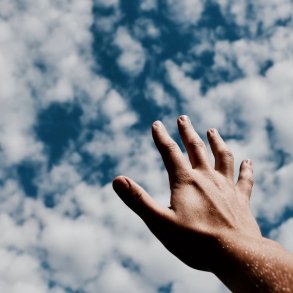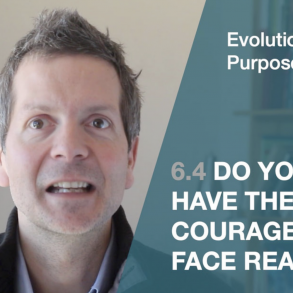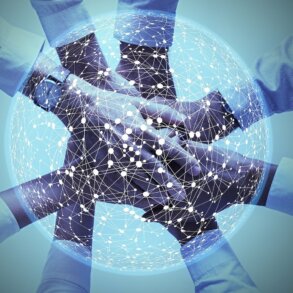By Daniel Christian Wahl and originally published on Medium.com / Age of Awareness
Reflections on the Ashoka ‘Global Change Leaders’ gathering to promote transformative innovation in education (2 of 4)
A weaver is someone who knows how to bridge between the different silos and sectors of society.
S/he has mastered the art of connecting people and organizations who were previously unconnected and often even unaware of each others’ role along the complex value chain of education.
This value chain is much more like a deeply interconnected ecosystem than a linear chain from kindergarten to schools, apprenticeships, universities or occupational training facilities and onto employment or entrepreneurship.
There was a lot of talk in Lyon at the ‘Global Change Leaders’ gathering on transforming education about the role of the ‘weaver’ in supporting the emergence of learning ecosystems. There was agreement that whole systems prototypes would have to demonstrate just what complexity a learning ecosystem could grow to and how weaving diverse stakeholders in education — which, let’s face it, all of society and civilization have a stake in — would enable everyone to learn how to “live for the greater good”. There was also much agreement that such prototypes would best be (bio-)regionally focussed and elegantly adapted to the uniqueness of local culture and ecosystems.

I have spent the last two decades weaving relationships, shared meaning, and collaborative agendas between experimental ecovillages communities and universities, sustainability training centres and the private sector, local authorities and UN bodies like UNITAR and UNESCO, non-formal education and formal eduaction, civil society organizations, grass-roots activists and the UN sustainable development process, between science and design, biomimetic innovation and whole systems design … .
With degrees from two different science departments and a school of art and design — I make my living by weaving content, meaning and capacity to catalyze transformative innovation and creating educational experiences that improve people’s capacity for whole systems design and regenerative development. Actually so much of this work as been unpaid that it might be misleading to say ‘I make a living’, much more than that, it is my calling.
In Gaia Education we call the person trying to integrate the content of the 4 dimensions of the curriculum into an interconnected whole systems understanding of sustainability the weaver. By always challenging our students to apply what they have learned in the design of a real project, in a real place for real people (even if they only work on a detailed plan for the interventions), we invite them to weave their own understanding into a whole systems design. The role of the weaver is part of each EDE course run by one of Gaia Education’s 80 partners around the world.
In asking myself what kind of work does a weaver do? I realized that so many of the organizations I have worked with are networks involved in one of the three dimensions described by Joanna Macy as part of the Great Turning from ‘industrial growth societies’ to ‘life-sustaining societies’. These are: i)holding actions that aim to stop further damage, ii) building new systems and prototypes, and iii) ‘seeing with new eyes’ (shifting the way we think through whole systems design and transformative education).
To give you a flavour of my own trajectory as a weaver between institutions and organizations. I have worked with and/or for the International Futures Forum, the Global Ecovillage Network, the State of the World Forum, Bioneers, the World Future Council, UK Foresight, the World Resource Institute, the Dubai Futures Foundation, Gaia Education with it’s global network of over 80 partner institutions in 50 countries and partnerships with UNESCO and UNITAR, Transition Town initiatives in different countries, permaculture networks in different countries, WWF Scotland, 350.org, the ‘Common Earth’ (Regenerative Development to Reverse Climate Change) initiative of the Commonwealth Secretariat and the Cloudburst Foundation, an EU Learning Partnership in Creative Sustainability, Forum for the Future, LEAD International, the European Council Network and Youth in Action, various universities and design schools, as well as, the local ‘technological innovation in tourism’ business cluster on Mallorca (Balears.t). So much for my credentials for having sought out working environments with high ‘weaving potential’.
Some reflections on what it means to be a weaver
Allow me to sense into and share my thoughts on what might be part of the palette of a weaver, useful tools, skills, experiences that ground a person into becoming or being a weaver.
Being a weaver is less a profession and more of a ‘Berufung’ — the German word for profession is ‘Beruf’ — the root is ‘Berufung’, which means one’s calling.
Are you feeling called to be a weaver of health and wholeness in this fractured and divided world of ours?
A weaver speaks the language of different disciplines and silos of knowledge well enought and understands enough about each of them in order to effectively broker conversations across these different fields.
A weaver is skillful in finding the right entry points and hooks to weave meaningful connections that can be easily appreciated from either side of the intellectual or institutional divides s/he is spanning.
Speaking different languages can help a weaver in translating between the different cultural and intellectual bubbles created by, for example anglophone, francophone, germanic or hispanic cultures.
Much weaving is needed in today’s world to nurture an alliance for a common humanity and a common Earth between China, India, Africa, Latin America and countries of waning cultural dominance in Europe and the US.
A weaver needs to be able to emphasize with the needs and perspectives of all those s/he is trying to connect into collaborative exchange and co-creative action.
More than that, weaving requires to nurture a field of empathy that involves and attracts ever more diverse collaborators — galvanized by mutual understanding, growing trust, and shared meaning and vision.
If there is such a thing as ‘deep-weaving’, it refers to reconnecting our story-lines and song-lines to our deeper human ancestry — and beyond that — to our individual and collective authority as conscious reflections of life’s 3.8 billion years of evolutionary wisdom.
Weaving even deeper into our past, we find our place in the cosmic story of the universe of 14 billion years. Yes, we are made from star-dust. The gold atoms in your parents’ wedding band were forged in the immense pressure and heat of a dying star!
Deep-time weaving also reconnects the generations alive today with their own care and responsibility for yet unborn generations who will inherit the Earth in whatever state we are leaving her.
Deep-weaving is about reminding people that the Iroquois Confederation of Tribes with their wise practice of taking important decisions ‘on behalf of the 7th yet unborn generation’ may have been far less ‘primitive people’ than our industrial growth societies have turned out to be.
How will we ever be able to chart the long-term arch of human cultural evolution, if we do not make it our regular practice to make wise and humble choices on behalf of future generations yet unborn?
How can we become weavers of whole systems health from individuals to families, communities, ecosystems and the biosphere, if we do not speak on behalf of rivers, forests, and wilderness for whose rights we have to stand tall?
Weaving a deeper long-term commitment across the political spectrum on issues that affect the health and future of humanity and the community of life as a whole, is a crucial leverage point in planetary and ecosystems regeneration.
We need to weave lasting alliances — wisdom councils — that up-hold such policies and regulations which need to stand above the party-political positioning of short-term election cycles.
Weavers are called to step onto a path of apprenticeship that in itself models and embodies life-long-learning. Being a weaver is not a label one can take on lightly. Nor is it a codified practice that can be transmitted in a quick workshop.
Weaving is an expression of life’s immune response to the converging planetary crises.
By consciously (re)connecting diverse participants in life’s evolutionary quest, weavers nurture synergy, symbiosis and reciprocal relationships that improve the health of the whole. Weaving is salutogenic — health-generating — culture design.
Weaving is both audacious in its guiding vision of humanity’s ability to co-create a thriving world that works for all and leaves nobody behind, and humble in its embrace of not-knowing and commitment to constant learning.
The most effective weavers are those who manage to facilitated meaningful connections between people and help them co-create a common project and collective positive impact in ways that make all involved take such ownership of the project that everyone comes to believe it was their own idea.
The effective weaver engages in social and cultural acupuncture in ways that the role of the weaver can become almost invisible, yet deeply effective. At their most skillful weavers catalyse systemic, place-based, long-term projects without the need to be permanently involved with each initiative themselves.
Weavers enable learning ecosystems to rediscover their ability to learn and help themselves. This includes seeking advise from and informing the greater whole that contains them.
Weaving requires the ability to constantly link local needs and opportunities to their regional, national and global context. Weaving is about aiming to create mutually beneficial synergies between different scales.
Just like health can emerge as a scale-linking emergent property of complex adaptive systems, weaving as a vector of health has to be scale-linking by design.

Weaving is the ancient art of recognizing health and wholeness as the primary state, and overcoming the blockages of seemingly broken connections.
Weavers are healers of the unbroken whole — connecting people and place in elegant tapestries of shared meaning and visions of a world that works for all.
… the weaving continues!
… Mi vida ha sido tejer. Y mientras tejo canto la dicha y la desventura de los hombres. Canto el nacimiento de las cosas: del agua, de las piedras, del fuego que en su crepitar me acompaña haciéndome coro. Canto para no olvidar el porqué de las cosas. …
— Juan Diego Tamayo — De la tejedora
…My life has been one of weaving. And as I weave, I sing of the happiness and misfortunes of men. I sing of the birth of things: of water, of stones, of fire, which in its crackling accompanies me in song. I sing not to forget the whys and wherefores of things. …
— Juan Diego Tamayo — The Weaver
Daniel Christian Wahl is the author of the internationally acclaimed book ‘Designing Regenerative Cultures’
Republished by permission of the author.
Featured Image/graphic link and some block quoting added by Enlivening Edge Magazine.





Ths song-like description moves me to tears. I must be a weaver! Sp grateful for this deeper look, both the zoomed out view at the end, and the specifics of how weavers function in so many arenas of life — usually doing their thing below a level that gets noticed! Weavers can be doing that function invislble even to themselves. I’m so grateful to you, Daniel Christian Wahl, for calling this out, in such a way — reading is almost like listening to a symphony, for me!